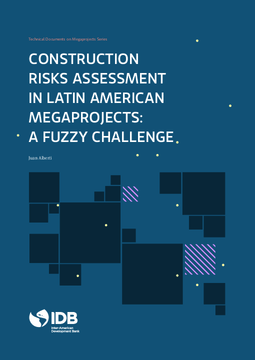Construction Risks Assessment in Latin American Megaprojects: A Fuzzy Challenge
Date
May 2021
A probabilistic approach is sometimes suggested to assess construction risks in megaprojects. This approach deals with the estimation of the likelihood and impact of risk factors, based on historical numeric data, and understands risks as estimated variances.
The application of Fuzzy Set Theory (FST) minimizes the inherent imprecision, inconsistency, vagueness and uncertainty that linguistic information imposes, and thus give the greatest possible objectivity to an inherently subjective analysis.
The objective of this document was to use FST to assess the construction risks of three megaprojects in Latin America and illustrate the relative importance of ill-defined risk factors in megaprojects of the region. The three cases studied were: Ferroanel Norte of So Paulo, Brazil; Central Railway of Uruguay; and Metro Line 1 of Bogotá, Colombia. The exercise here presented has allowed to list the most relevant construction risk factors for each case, and show the relative importance of ill-defined variables. Furthermore, it has helped to calculate the contribution of the following risk dimensions: social, technical, environmental, economic and political. On this basis, the document concludes on the usefulness of this approach for megaproject construction risk assessments.
The application of Fuzzy Set Theory (FST) minimizes the inherent imprecision, inconsistency, vagueness and uncertainty that linguistic information imposes, and thus give the greatest possible objectivity to an inherently subjective analysis.
The objective of this document was to use FST to assess the construction risks of three megaprojects in Latin America and illustrate the relative importance of ill-defined risk factors in megaprojects of the region. The three cases studied were: Ferroanel Norte of So Paulo, Brazil; Central Railway of Uruguay; and Metro Line 1 of Bogotá, Colombia. The exercise here presented has allowed to list the most relevant construction risk factors for each case, and show the relative importance of ill-defined variables. Furthermore, it has helped to calculate the contribution of the following risk dimensions: social, technical, environmental, economic and political. On this basis, the document concludes on the usefulness of this approach for megaproject construction risk assessments.




